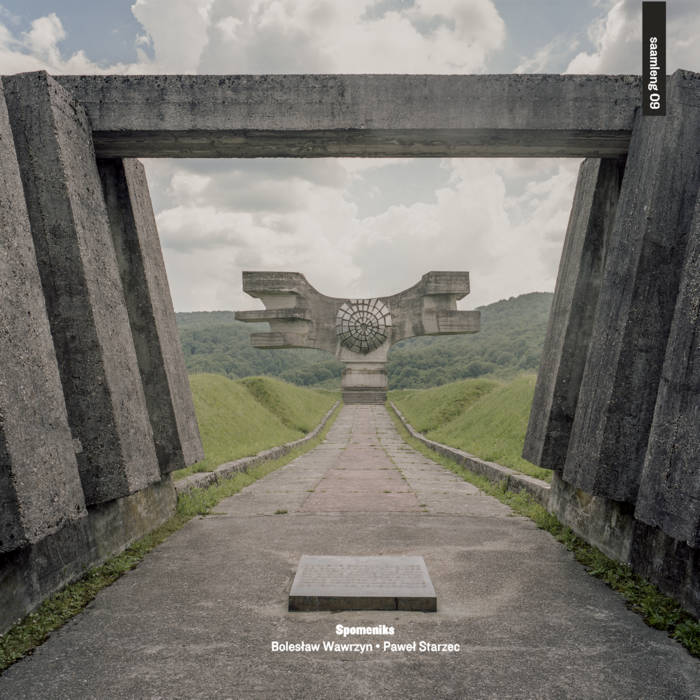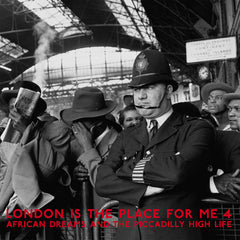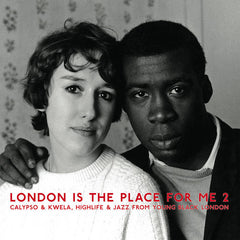Bolesław Wawrzyn & Paweł Starzec // Spomeniks CD
- Availability:
ポーランドのフィールドレコーディング作家Bolesław WawrzynとPaweł Starzecが、2019年に同国フィールドレコーディングレーベルsaamlengからリリースしたCDです。
クロアチアで収集したフィールドレコーディング5曲を収録。ゲートフォルドデジパック仕様です。
以下、レーベルによる解説です。
01. ヤセノヴァツ強制収容所(しばしば「ユーゴスラヴィアのアウシュヴィッツ」と呼ばれる)は、1941年にクロアチア独立国によって設立され、ウスターゼ政権が単独で運営していた。収容者のほとんどは、革手袋と農業用ナイフで作られた仮の道具、いわゆる「スルボシェク(セルブカッター)」によって屠殺された。何年もの間、推定被害者数は3万人から140万人まで様々であった。最も多く推定されているのは10万人で、そのほとんどがセルビア人である。メモリアルサイトは、クロアチアで最初の民主的選挙が行われる直前の1990年に設立された。
02. ヤジンチ記念公園は1960年に設立され、1986年に文化遺産に指定された。ベオグラードで最も大きな公園の一つであり、現在は遠足や家族団らんの場として、また子供たちが自転車やスクーターに乗るための広大なスペースとして利用されている。この公園は、ユーゴスラビア軍の射撃場があった場所に造られた。1941年7月15日から1943年末まで毎日、ナチス軍はベオグラードの強制収容所から連行された人々を処刑した。その期間に殺された人の数は、6万5千人から8万人と推定されている。
03. ゼムンのユダヤ人収容所(Judenlager Semlin)としても知られるサジミステ強制収容所は、1941年10月から1943年7月までSSアインザッツグルッペン部隊によって運営されていた。第二次世界大戦後、ユーゴスラビア政府はその間に10万人が収容所を通過し、その半数が殺されたと発表した。現在、セルビア人権ヘルシンキ委員会は、死者数は政治的目的のために誇張されたものであり、実際の数はおよそ5万人の囚人と2万人の抹殺者であると主張している。記念碑と小さな慰霊碑のほか、戦後に残された、あるいは再建されたすべての建物は今も利用されている。1948年、その場所は青年労働者の本部と兵舎に変わった。現在、残された建物はすべて移民によって、おそらく不法に使用されている。
04. トポフスケ・シュペ強制収容所は1941年8月20日に設立され、その年の終わりまで運営された。その間、5000人から6500人が収容され、そのうち約4300人が殺された。犠牲者のほとんどはユダヤ人かロマ人であり、彼らは共産主義者や反ファシストの闘士ではなかったため、政治的な理由から、収容所は長年共産主義政権によって放置されていた。今日に至るまで、2つのバラックと壁の一部が、一部の移民によって不法に使用されている。バラックの1つには、録音で聴くことができる間に合わせの自動車修理工場がある。バラックを取り壊し、その場所に巨大なショッピングモールとオフィスビルを建設しようとしていた地元で最も裕福な実業家の一人に関する論争の後、この場所に最初の記念プレートが設置されたのは2005年のことだった。2017年にはプレートが盗まれ、再び記念碑は忘れ去られた。新しいプレートが設置されたのは、私たちが録音に訪れるわずか2週間前のことだった。市当局もロマ人団体も、この場所を取り壊すことに同意した。おそらく2019年8月以降になるだろう。
05. モスラヴィナ市民の革命記念碑は、ドゥサン・ザモニャのプロジェクトにより、1967年にポドガリッチに建てられた。1941年のクロアチア蜂起の犠牲者に捧げられ、記念碑の近くに埋葬された900人の兵士を記念している。
レーベルその他作品はこちら /// Click here to see more saamleng releases available at Tobira.
----------------------
CD in gatefold sleeve. Edition of 300.
Tracklist:
- Jasenovac Concentration Camp 14:31
- Memorial Park Jajinci 11:28
- Sajmiste Concentration Camp 13:07
- Topovske Supe Concentration Camp 10:12
- Monument of the Revolution of the People of Moslavina 03:28
++
Track information / accompanying text :
"01. The Jasenovac concentration camp (often referred to as 'The Yugoslavian Auschwitz') was established in 1941 by The Independent State of Croatia and was solely operated by the governing Ustase regime. Inmates of the camp were mostly slaughtered by so-called „srbosjek” (Serbcutter) – a provisional tool made from a leather glove and an agricultural knife. Until now we are not sure how many people were killed in the camp - during the years an estimated count has varied from 30,000 to 1.4 million of victims. The most often estimation is 100 000 people, mostly Serbs. The Memorial Site was established in 1990, shortly before the first democratic election in Croatia.
02. Memorial Park Jajinci was established in 1960 and was proclaimed as a cultural monument in 1986. It is one of the biggest public parks in Belgrade, serving currently as a place designated for field trips, enjoying family time as well as huge space for children to ride bicycles or scooters. The park was built in the location of Military Shooting Ranged of the Yugoslavian Armed Forces. Every single day starting from 15 July 1941 till the end of 1943, the Nazi forces conducted executions of people brought daily from the concentration camps located in Belgrade. The estimates of people killed during that period varies from 65 to 80 thousand.
03. The Sajmiste concentration camp, known also as the Jewish camp in Zemun (Judenlager Semlin) was run by SS Einsatzgruppen units from October 1941 till July 1943. After the World War II the Yugoslavian government claimed that during those years 100 000 people had passed through the camp and half of them were killed. Currently, the Helsinki Committee for Human Rights in Serbia claims that the death toll has been exaggerated for political purposes and a real number is approx. 50 000 prisoners and 20 000 exterminated. Besides the monument and the small memorial, all buildings that were left or rebuilt after the war are still exploited. In 1948 that place was transformed into a youth workers headquarters and barracks. Currently all of the buildings left are inhibited by immigrants, most probably illegally.
04. The Topovske Supe concentration camp was established on 20 August 1941 and was operated till the end of that year. During that time from 5000 to 6500 people were inmates there and approximately 4300 of them were killed. Since the most of the victims were Jews or Romani people and they were not communist or anti-fascist fighters, the camp was neglected by the communist regime for many years because of political reasons. Till nowadays, two barracks and pieces of a wall are still existing, illegally inhibited by some immigrants. There is some kind of makeshift auto-repair parlour, which is heard on the recording, in one of the barracks. The first memorial plaque at the site was established in 2005 after the controversy regarding one of the wealthiest local businessmen who had wanted to demolish the barracks and start a construction site of a giant mall and office buildings at that place. In 2017 the plaque was stolen and once again the memorial site was forgotten. The new plaque had been placed at the site just two weeks before we came to make recordings there. Both the city authorities and Romany organizations agreed to demolishe the site; it will probably happen after August 2019.
05. Monument to the Revolution of the people of Moslavina was erected in Podgarić in 1967, by the project of Dusan Dzamonja. It is dedicated to victims of 1941 uprising in Croatia and commemorates 900 soldiers who had been buried near the monument. "
Artist : Bolesław Wawrzyn & Paweł Starzec
Label : saamleng
ポーランドのフィールドレコーディング作家Bolesław WawrzynとPaweł Starzecが、2019年に同国フィールドレコーディングレーベルsaamlengからリリースしたCDです。
クロアチアで収集したフィールドレコーディング5曲を収録。ゲートフォルドデジパック仕様です。
以下、レーベルによる解説です。
01. ヤセノヴァツ強制収容所(しばしば「ユーゴスラヴィアのアウシュヴィッツ」と呼ばれる)は、1941年にクロアチア独立国によって設立され、ウスターゼ政権が単独で運営していた。収容者のほとんどは、革手袋と農業用ナイフで作られた仮の道具、いわゆる「スルボシェク(セルブカッター)」によって屠殺された。何年もの間、推定被害者数は3万人から140万人まで様々であった。最も多く推定されているのは10万人で、そのほとんどがセルビア人である。メモリアルサイトは、クロアチアで最初の民主的選挙が行われる直前の1990年に設立された。
02. ヤジンチ記念公園は1960年に設立され、1986年に文化遺産に指定された。ベオグラードで最も大きな公園の一つであり、現在は遠足や家族団らんの場として、また子供たちが自転車やスクーターに乗るための広大なスペースとして利用されている。この公園は、ユーゴスラビア軍の射撃場があった場所に造られた。1941年7月15日から1943年末まで毎日、ナチス軍はベオグラードの強制収容所から連行された人々を処刑した。その期間に殺された人の数は、6万5千人から8万人と推定されている。
03. ゼムンのユダヤ人収容所(Judenlager Semlin)としても知られるサジミステ強制収容所は、1941年10月から1943年7月までSSアインザッツグルッペン部隊によって運営されていた。第二次世界大戦後、ユーゴスラビア政府はその間に10万人が収容所を通過し、その半数が殺されたと発表した。現在、セルビア人権ヘルシンキ委員会は、死者数は政治的目的のために誇張されたものであり、実際の数はおよそ5万人の囚人と2万人の抹殺者であると主張している。記念碑と小さな慰霊碑のほか、戦後に残された、あるいは再建されたすべての建物は今も利用されている。1948年、その場所は青年労働者の本部と兵舎に変わった。現在、残された建物はすべて移民によって、おそらく不法に使用されている。
04. トポフスケ・シュペ強制収容所は1941年8月20日に設立され、その年の終わりまで運営された。その間、5000人から6500人が収容され、そのうち約4300人が殺された。犠牲者のほとんどはユダヤ人かロマ人であり、彼らは共産主義者や反ファシストの闘士ではなかったため、政治的な理由から、収容所は長年共産主義政権によって放置されていた。今日に至るまで、2つのバラックと壁の一部が、一部の移民によって不法に使用されている。バラックの1つには、録音で聴くことができる間に合わせの自動車修理工場がある。バラックを取り壊し、その場所に巨大なショッピングモールとオフィスビルを建設しようとしていた地元で最も裕福な実業家の一人に関する論争の後、この場所に最初の記念プレートが設置されたのは2005年のことだった。2017年にはプレートが盗まれ、再び記念碑は忘れ去られた。新しいプレートが設置されたのは、私たちが録音に訪れるわずか2週間前のことだった。市当局もロマ人団体も、この場所を取り壊すことに同意した。おそらく2019年8月以降になるだろう。
05. モスラヴィナ市民の革命記念碑は、ドゥサン・ザモニャのプロジェクトにより、1967年にポドガリッチに建てられた。1941年のクロアチア蜂起の犠牲者に捧げられ、記念碑の近くに埋葬された900人の兵士を記念している。
レーベルその他作品はこちら /// Click here to see more saamleng releases available at Tobira.
----------------------
CD in gatefold sleeve. Edition of 300.
Tracklist:
- Jasenovac Concentration Camp 14:31
- Memorial Park Jajinci 11:28
- Sajmiste Concentration Camp 13:07
- Topovske Supe Concentration Camp 10:12
- Monument of the Revolution of the People of Moslavina 03:28
++
Track information / accompanying text :
"01. The Jasenovac concentration camp (often referred to as 'The Yugoslavian Auschwitz') was established in 1941 by The Independent State of Croatia and was solely operated by the governing Ustase regime. Inmates of the camp were mostly slaughtered by so-called „srbosjek” (Serbcutter) – a provisional tool made from a leather glove and an agricultural knife. Until now we are not sure how many people were killed in the camp - during the years an estimated count has varied from 30,000 to 1.4 million of victims. The most often estimation is 100 000 people, mostly Serbs. The Memorial Site was established in 1990, shortly before the first democratic election in Croatia.
02. Memorial Park Jajinci was established in 1960 and was proclaimed as a cultural monument in 1986. It is one of the biggest public parks in Belgrade, serving currently as a place designated for field trips, enjoying family time as well as huge space for children to ride bicycles or scooters. The park was built in the location of Military Shooting Ranged of the Yugoslavian Armed Forces. Every single day starting from 15 July 1941 till the end of 1943, the Nazi forces conducted executions of people brought daily from the concentration camps located in Belgrade. The estimates of people killed during that period varies from 65 to 80 thousand.
03. The Sajmiste concentration camp, known also as the Jewish camp in Zemun (Judenlager Semlin) was run by SS Einsatzgruppen units from October 1941 till July 1943. After the World War II the Yugoslavian government claimed that during those years 100 000 people had passed through the camp and half of them were killed. Currently, the Helsinki Committee for Human Rights in Serbia claims that the death toll has been exaggerated for political purposes and a real number is approx. 50 000 prisoners and 20 000 exterminated. Besides the monument and the small memorial, all buildings that were left or rebuilt after the war are still exploited. In 1948 that place was transformed into a youth workers headquarters and barracks. Currently all of the buildings left are inhibited by immigrants, most probably illegally.
04. The Topovske Supe concentration camp was established on 20 August 1941 and was operated till the end of that year. During that time from 5000 to 6500 people were inmates there and approximately 4300 of them were killed. Since the most of the victims were Jews or Romani people and they were not communist or anti-fascist fighters, the camp was neglected by the communist regime for many years because of political reasons. Till nowadays, two barracks and pieces of a wall are still existing, illegally inhibited by some immigrants. There is some kind of makeshift auto-repair parlour, which is heard on the recording, in one of the barracks. The first memorial plaque at the site was established in 2005 after the controversy regarding one of the wealthiest local businessmen who had wanted to demolish the barracks and start a construction site of a giant mall and office buildings at that place. In 2017 the plaque was stolen and once again the memorial site was forgotten. The new plaque had been placed at the site just two weeks before we came to make recordings there. Both the city authorities and Romany organizations agreed to demolishe the site; it will probably happen after August 2019.
05. Monument to the Revolution of the people of Moslavina was erected in Podgarić in 1967, by the project of Dusan Dzamonja. It is dedicated to victims of 1941 uprising in Croatia and commemorates 900 soldiers who had been buried near the monument. "
Artist : Bolesław Wawrzyn & Paweł Starzec
Label : saamleng







